I tried the new Garmin Forerunner 165 fitness tracker - here's why it's the 'perfect' smartwatch for new runners
The Garmin Forerunner 165 is the brand's latest running-focused tracker, designed for new runners to take on the roads and trails with confidence
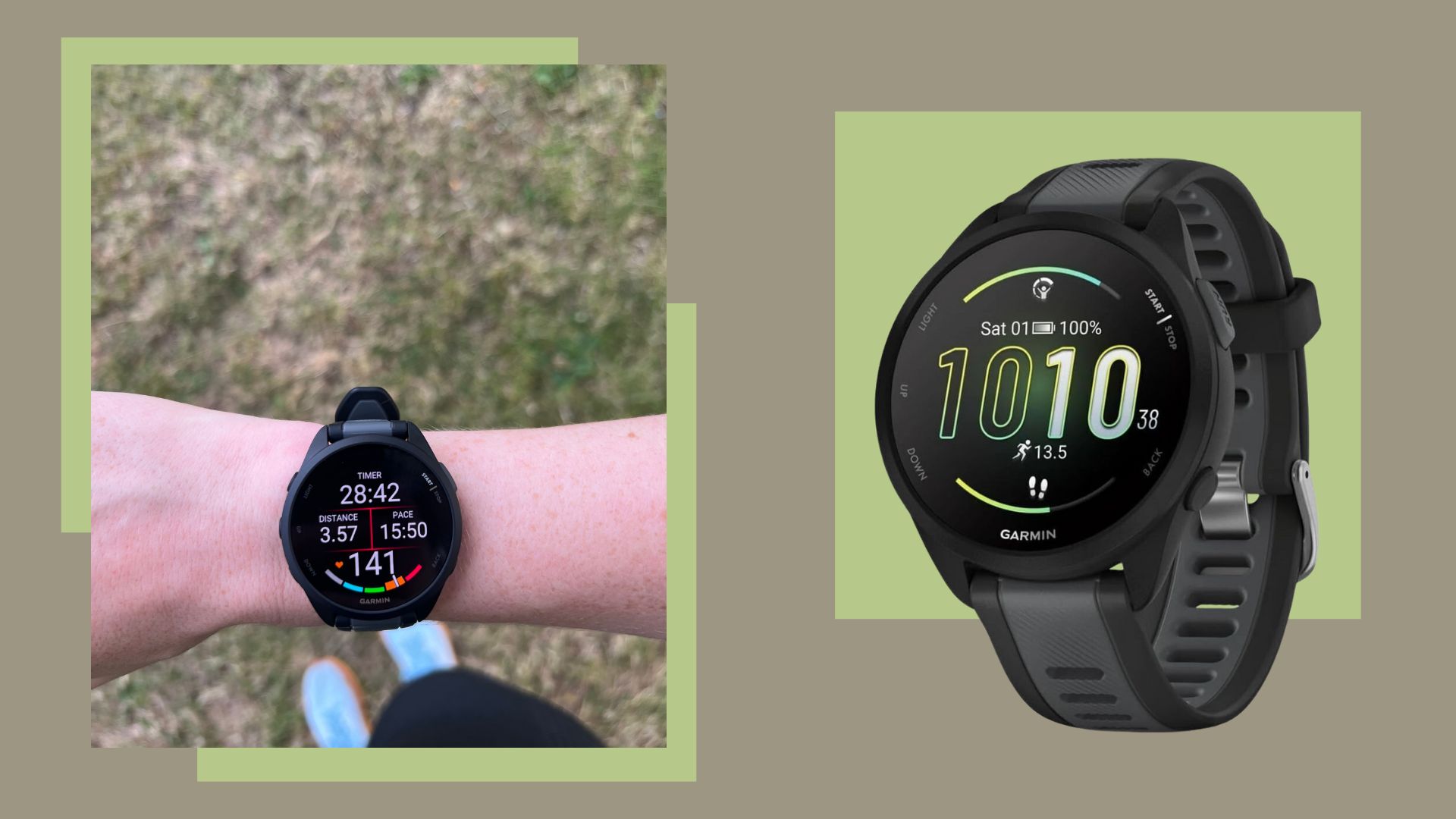
Packs in advanced Forerunner features into an easy-to-use smartwatch with a full-colour OMLED display, perfect for those new to running or looking to start this year
-
+
Very easy to use
-
+
Touchscreen and physical buttons
-
+
Long battery life
-
+
Multiple colour choices
-
-
Easy to accidentally bump touchscreen
-
-
No dual-band GPS
Why you can trust Woman & Home

The Garmin Forerunner 165 is the newest release in the fitness brand's running-focused range, designed for the newcomer or those who want a simple fitness tracker. It's simple to use, easy to view essential statistics, and suitable for so much more than running with advanced sleep metrics and stress scores available too.
With persistent heat waves this summer and no sign of the warmer nights coming to an end, it makes sense that many of us are thinking about how we can keep running this autumn by investing in one of the best fitness trackers.
Whether you have a goal in mind this year with your fitness or just want to get to know yourself better with insights into your workouts, sleep, and stress scores, if you're wondering 'which Garmin should I buy', we have you covered. The Garmin Forerunner 165 could be your next must-have fitness accessory - it's even in the Garmin sale at the time of writing. As woman&home's digital health editor, I took the watch for a 2-week spin - here's what I learnt along the way.
Garmin Forerunner 165 review
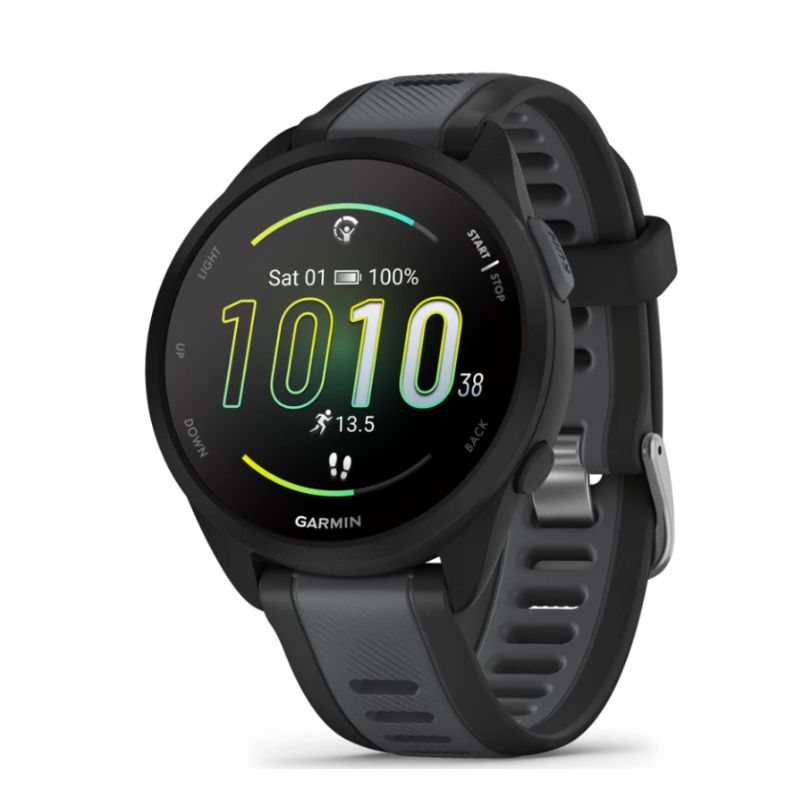
RRP: £249.99
The Garmin Forerunner 165 is the perfect smartwatch for first-time buyers or those who want something simple. There are over 25 exercise modes to choose from, advanced sleep-tracking technologies, and built-in GPS workouts to help you make the most of your workouts.
Garmin Forerunner 165: An overview
The Garmin Forerunner 165 covers the basics of fitness tracking with a running-focused approach. With a bright AMOLED screen, long battery life, and simple-to-use display, and over 25 workout modes, it's a great watch for daily workouts, tracking fitness essentials like steps and floors climbed, and monitoring your sleep habits.
This watch is a paired-back version of the previous Forerunner 265 model, and in my view, almost just as good at half the price. Having tried and tested the 265, along with other advanced models in the Forerunner collection, I can safely say this watch packs in the essentials of premium Garmin watches at a more reasonable price point.
Garmin's Forerunner 165 comes in just one size (43mm case,1.2inch screen), fitting nicely on my wrist with plenty of space to view the stats - without feeling too bulky. It works via touch screen and five buttons around the outside, a combination that I found useful when running outdoors as it was easy to navigate to music controls and start/stop my workout. However, I did accidentally touch the screen a couple of times, navigating away from the screen I needed on my watch. I've had the same problems with even some of the best Fitbits since these are also touchscreen, so it's not an issue exclusive to this watch or even the brand.
The Garmin 165 comes in neutral (black and white) and bold (hot pink and turquoise) colourways, offering plenty of choice. Being a Garmin, it has a more rugged, sports-orientated design than the Apple Watch Series 9, for example.
As with all Garmin watches, you'll need to sign up to the Garmin Connect app to get the most from your device. This is where you'll see all your data, including workout insights from the last few weeks, advanced deep dives into your sleep habits, and recommendations for improving your fitness - and it's totally free to download and use.
Garmin Forerunner 165: Specifications
- RRP: £249.99
- Size: 43 x 43 x 11.6 mm
- Weight: 39g
- Material: Fibre-reinforced polymer with a silicone wristband
- In-built GPS: Yes
- Battery life: Up to 11 days
- Waterproof: 5 ATM (up to 50 meters)
Who is the Garmin Forerunner 165 suited to?
The Garmin Forerunner 165 is designed for new runners and those looking to improve their running - without getting too adventurous. This watch is great for running on roads in cities or in well-mapped countryside and good for anything up a marathon distance and training - but if you're running in denser, building or tree-heavy environments or longer distances, you may need a higher-tech smartwatch companion.
For those who like to walk regularly, this is a great watch for monitoring fitness and recording routes and distances. The brand does offer watches specifically designed for hiking - like the Fenix and Epix collections - but unless you're planning to hike away from the beaten track, you're unlikely to need the advanced GPS tracking and route-planning software.
If you're looking for a daily tracker for strength training, regular gym workouts, or just to keep an eye on your overall health as it relates to your sleep and fitness, the Garmin Forerunner 165 could also be a great option. There are almost 30 workout modes - including Bike (indoor and outdoor), Pool Swim, Walk, Strength, Yoga, Pilates, and even Pickleball and Breathwork. Each mode, when activated, offers specific, advanced metrics for that particular sport - e.g. lengths done during a Pool Swim. It can also measure your fitness age, a prediction of how old your body is compared to your real age.
Running with Garmin Forerunner 165
I ran 30 minutes a day at least six times with the Garmin Forerunner 165 across various terrains - including down Oxford Street in the centre of London, quiet streets in the suburbs, river-side canals, a running track, and trails in the Cotswolds. It was a busy two weeks. This, however, gave me possibly the most comprehensive idea of how running with the Garmin Forerunner 165 can be.
A couple of features make the Forerunner 165 an excellent running watch. Firstly, it's simple and easy to use, with the most relevant metrics available with a glance of the wrist thanks to the AMOLED full-colour display, which is visible even in bright light. I can see distance, pace, time, and scroll to view more lap-specific insights - and also get the time, which is always useful! Simplicity, I feel, is always undervalued in fitness trackers with so many on the market.
Then there's the barometric altimeter, which helps the watch gauge your positioning vertically, so it recognises when you're running up a hill and will reflect this in the distance and effort presumed in the run. It's also the sensor that tracks the number of 'floors' you've climbed.
If you're not a runner, it's also worth weighing up Garmin Venu vs Forerunner as the two devices have much in common - but the Venu is better for all rounders.
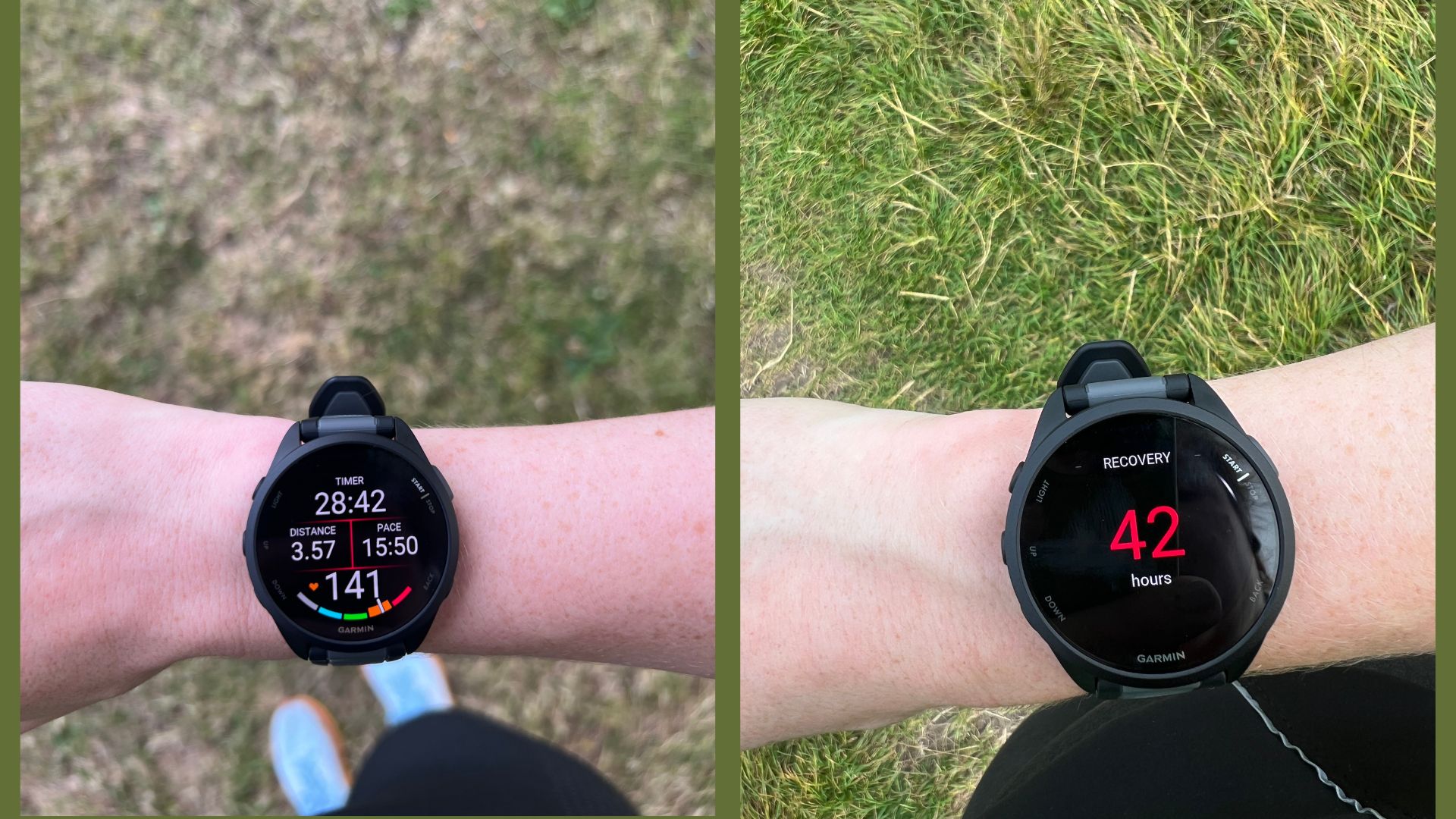
View vital metrics during the run and recovery time when you're done with the Garmin Forerunner 165.
Thirdly, the battery life. While the brand says the watch lasts 11 days, this is only in smartwatch mode. With multiple workouts tracked, I found it lasted between five and seven days but that's still an impressive amount. Plus, it's quick to charge.
One missing feature on the Garmin Forerunner 165 would perhaps make me more inclined to spring for the Forerunner 265 or a more advanced model: the dual-band GPS. Dual-band GPS is the technology that uses multiple frequencies to improve position location - and it's missing from the Forerunner 165.
As someone who runs a lot in cities and well-mapped parks in London, I didn't think this would bother me too much. However, when I went for a run while staying in the Cotswolds recently, I found some issues with GPS tracking. The pace monitor dropped out randomly on occasion while I was moving, which was then reflected in my overall distance and pace stats at the end of my run. Not the end of the world - but a little disappointing when it had faired so well down city streets and even along narrow canals with taller buildings on either side.
So, this is something worth bearing in mind. If you are a city runner, the Garmin Forerunner 165 could be an excellent choice and pose no issues to you. If you live in the countryside or plan on trail running anytime soon, perhaps a watch with dual-band GPS may be a better option.
Fitness tracking on the Garmin Forerunner 165
I don't hide that I'm a big fan of Garmin's Forerunner collection as a regular runner myself. However, it's truly been a breeze to use the fitness tracking software on the Garmin Forerunner 165. With four simple taps on the top right button, you can navigate through the homepage to start an exercise and get going. To pause and end the workout, it's another tap of the button.
During the workout, whether that's a run or a full-body Pilates workout, I could see all my metrics on the screen. That includes a timer, pace counter and heart rate monitor on a run. For a yoga workout and Pilates, you'll see a timer, your heart rate, a stress score, and respiratory rate. For strength training, the device counts your reps for you and you can log your sets, and see your heart rate, and calorie burn. While I've never found this feature very useful, if you want to get detailed with your training, it's a good one to have.
On other fitness trackers, it can feel like your workout modes are all the same as the same metrics are shown for each different type of sport. However, it all feels highly personalised on the Garmin Forerunner 165. You can also edit your list of workouts on the watch to favourite your most-used.
When you've finished a workout, the session is automatically synced to the Garmin Connect app, where you can view your insights in more detail. Unlike some other fitness trackers, including the WHOOP 2.0 and Oura Ring, the metrics are available with the app download and you don't have to pay a subscription.
Apart from dual-band GPS, the one thing I wish the Garmin Forerunner 165 did have was the 'Training Status' feature. Having gotten used to this on the triathlon-specific Forerunner 945, I missed it using this watch. Training Status takes into account your load, rest, and recovery status to give you an active idea of where you are fitness-wise - from Recovery to Productive, with insights at each level on how to improve. However, considering the Forerunner 265's price tag, I'm not surprised this isn't included.
It does, however, have the standard Body Battery metric as with any other Garmin device. Similarly, this takes your sleep, activity, and recovery levels into account to offer a score of fatigue out of 100 with insights into your training. I find this useful if I've had a particularly step-heavy or run-heavy week, to make sure I'm leaving myself enough rest between exercise days.
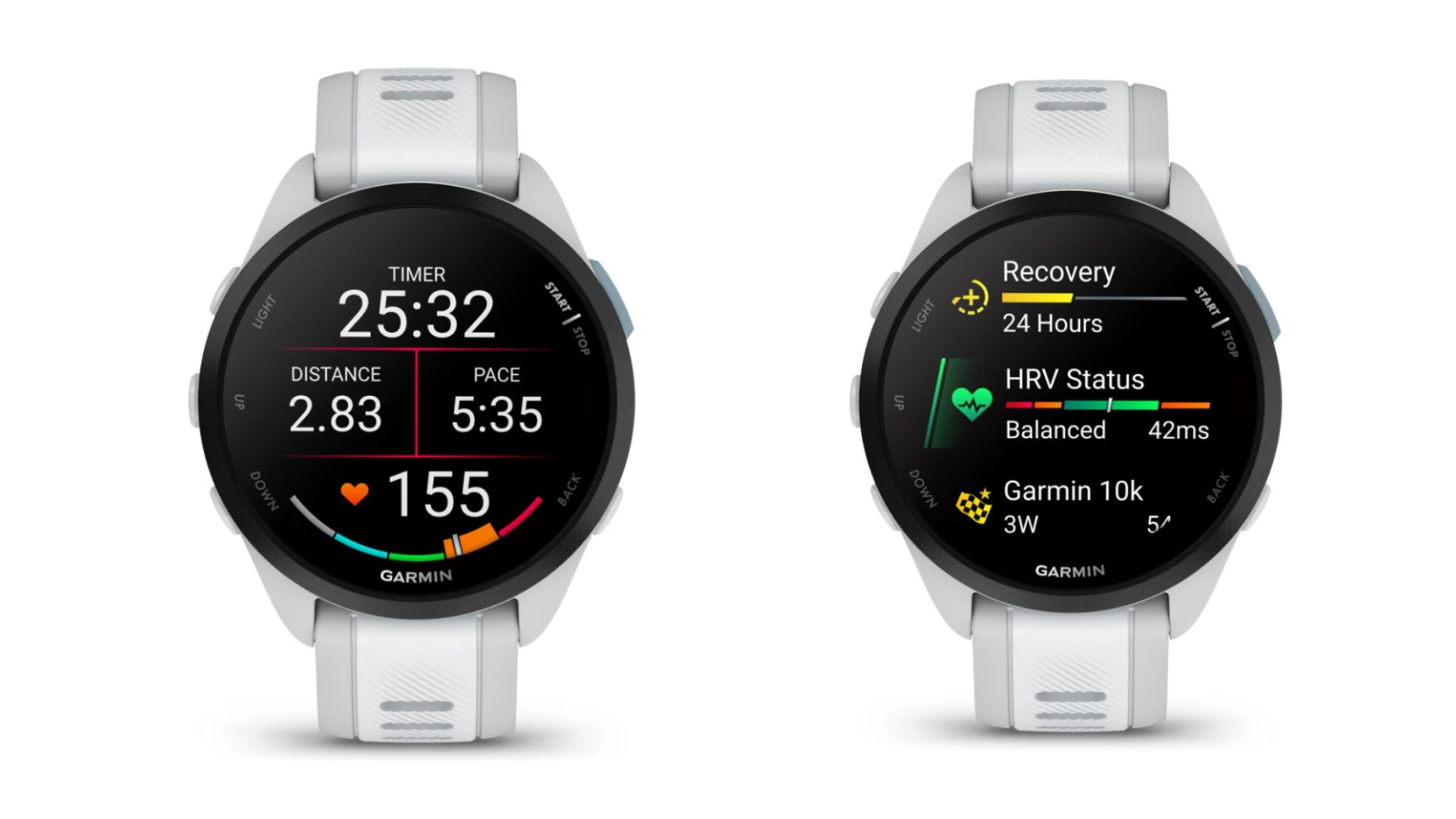
While in a workout mode (left), the Garmin Forerunner 165 displays key metrics. Afterwards (right), the scrollable screen on the watch reveals metrics from the last 24 hours.
Sleep tracking on the Garmin Forerunner 165
The Garmin Forerunner 165 offers advanced sleep tracking sensors, including nap detection. Provided you wear the watch while you're asleep, the device will automatically detect when you're asleep and monitor your movement during the night.
You can also set your 'normal' sleep hours manually in the Garmin app and the watch will take note of your movements during this time, which can be especially helpful if you're looking to stick to a good bedtime routine and learn how to sleep better. It's these kind of statistics that truly make a fitness tracker worth it.
Insights in the Garmin Connect app will reveal how long you were asleep for, the type of sleep you had (Light, Deep, or REM) and how rested you are post-sleep. If you like to take naps during the day - or find yourself drifting off - you'll also be able to see this data here.
While I find that sleep-tracking data is rarely 100% accurate, the Garmin Forerunner 165 does offer sleep tracking at a close-to-perfect point, matching up to the brand's range of more advanced health-tracking watches.
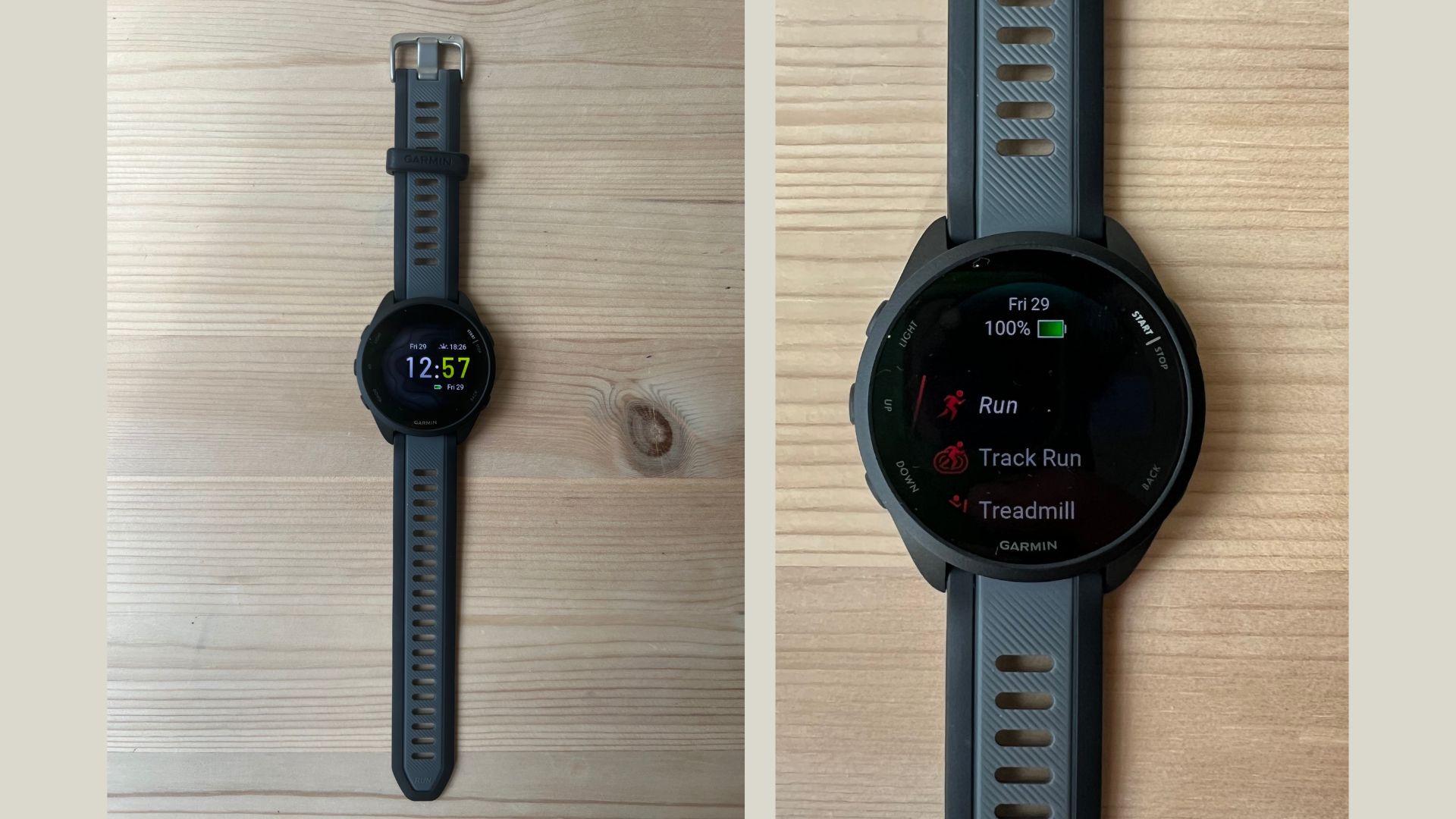
Scroll through 30 workout modes on the Garmin Forerunner 165, including multiple types of running.
Is the Garmin Forerunner 165 worth it?
Yes, absolutely. If you are new to exercise, looking to start running for weight loss or any other reason, and you want a basic fitness tracker to get going with, this is a great option. With advanced sleep and workout-tracking sensors, I find that I get a highly accurate and, importantly, understandable and useful insight into my sessions when I use this watch. It has all the information you need to make improvements and none you don't.
As noted, there are some missing features of the more advanced models in the Forerunner range - such as dual-band GPS and Training Status. Take a look at the Garmin Forerunner 265 if you're interested in these. There's also no way to use map features when not connected to a wireless network or Wifi point, no voice assistant, and you won't be able to control your music via your watch unless you have the 'Music' model. Nevertheless, for just shy of £250, this ticks all the must-have boxes. Plus, all these features are packaged up in a slim-fit design with a lightweight build and multiple colour options, making this a device for daily life as well as exercise.
How much does the Garmin Forerunner 165 cost?
The Garmin Forerunner 165 costs £249.99 from the website and various retailers. Both versions, 'Music' (where users can control music from their wrist) and regular (where music must be controlled from your phone), are the same price. I tested the version with music control.
Whether this is a reasonable price comes down to personal opinion, but in my view, it's pretty standard for a watch of this quality. You can get more budget-friendly buys - such as the Fitbit Charge 6 - but you'll find you compromise on something, whether that's the design, GPS accuracy, or features.
Compared to other Garmin fitness trackers specifically, it's cheaper than advanced fitness trackers like the Garmin Venu 3 or the Garmin Forerunner 945, which I have been wearing (and loving!) for the past two years. It's a little more expensive than older models in the Forerunner range though, such as the Garmin Forerunner 55 or the Vivoactive 5, both good alternatives (with their own perks and drawbacks) if you're on a budget.
You'll also find this watch in the Garmin sale occasionally, bringing the price down closer to the £200 mark.
Sign up for the woman&home newsletter
Sign up to our free daily email for the latest royal and entertainment news, interesting opinion, expert advice on styling and beauty trends, and no-nonsense guides to the health and wellness questions you want answered.

Grace Walsh is woman&home's Health Channel Editor, working across the areas of fitness, nutrition, sleep, mental health, relationships, and sex. She is also a qualified fitness instructor. In 2025, she will be taking on her third marathon in Brighton, completing her first ultra marathon, and qualifying as a certified personal trainer and nutrition coach.
A digital journalist with over seven years experience as a writer and editor for UK publications, Grace has covered (almost) everything in the world of health and wellbeing with bylines in Cosmopolitan, Red, The i Paper, GoodtoKnow, and more.
-
 Davina McCall says entering perimenopause was 'terrifying and lonely' - and it left her 'furious' at her lack of knowledge on the subject
Davina McCall says entering perimenopause was 'terrifying and lonely' - and it left her 'furious' at her lack of knowledge on the subject"I know nothing. This is so insulting."
By Charlie Elizabeth Culverhouse Published
-
 Clodagh McKenna shares her 'one-minute practice' that 'really works' to clear and calm the mind
Clodagh McKenna shares her 'one-minute practice' that 'really works' to clear and calm the mindClodagh McKenna uses simple meditation to find calm, with a handy ‘one-minute practice’ helping to settle her racing thoughts.
By Charlie Elizabeth Culverhouse Published
-
 Prince George will start a new school this year and 'smart money' is on Kate and William choosing this one, says royal expert
Prince George will start a new school this year and 'smart money' is on Kate and William choosing this one, says royal expertPrince George only has just over a year left at Lambrook School and Emily Andrews believes there's a top contender for his next one.
By Emma Shacklock Published